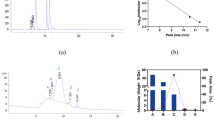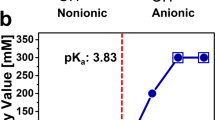Abstract
Mannosylerythritol-lipids-B (MEL-B) are microbial-produced glycolipids with skincare properties, notably moisturizing, antimelanogenic, antimicrobial, and antiaging. Thus, there is a potential use of MEL-B in a formulation for treating acne-prone skin. This study investigated the antimicrobial effect of MEL-B against the Gram-positive bacteria Cutibacterium acnes. The broth macro dilution method was used to evaluate the growth of C. acnes (3–4 CFU/mL), in the absence (positive control) or presence of MEL-B (128, 192, 256, and 512 μg/mL). Additionally, the leakage of genetic materials was used to determine the potential drug-induced membrane disruption of glycolipids. The amount of DNA and RNA release was quantified spectrophotometrically at 260 nm. Macro dilution technique and membrane integrity experiments showed that MEL-B does not have antimicrobial activity against C. acnes. Indeed, MEL-B assisted C. acnes growth. Ultimately, MEL-B has been reported as a remarkably active compound for skincare formulations; however, preliminarily, it should be avoided for acneic skin.

Similar content being viewed by others
Data availability
Data available on request from the authors.
References
Coelho ALS, Feuser PE, Carciofi BAM et al (2020) Mannosylerythritol lipids: antimicrobial and biomedical properties. Appl Microbiol Biotechnol 104:2297–2318. https://doi.org/10.1007/s00253-020-10354-z
Coelho ALS, Feuser PE, Carciofi BAM et al (2020) Biological activity of mannosylerythritol lipids on the mammalian cells. Appl Microbiol Biotechnol 104:8595–8605. https://doi.org/10.1007/s00253-020-10857-9
De Andrade CJ, Coelho ALS, Feuser PE et al (2022) Mannosylerythritol lipids: production, downstream processing, and potential applications. Curr Opin Biotechnol 77:102769. https://doi.org/10.1016/j.copbio.2022.102769
Feuser PE, Coelho ALS, De Melo ME et al (2021) Apoptosis induction in murine melanoma (B16F10) cells by mannosylerythritol lipids-B; a glycolipid biosurfactant with antitumoral activities. Appl Biochem Biotechnol 193:3855–3866. https://doi.org/10.1007/s12010-021-03620-x
Okuhira K, Koike S, Ito S et al (2020) The bio-surfactant mannosylerythritol lipid acts as a selective antibacterial agent to modulate rumen fermentation. Anim Sci J 91:e13464. https://doi.org/10.1111/asj.13464
Leite MGA, Campos PMBGM (2020) Correlations between sebaceous glands activity and porphyrins in the oily skin and hair and immediate effects of dermo-cosmetic formulations. J Cosm Dermatol 19:3100–3106. https://doi.org/10.1111/jocd.13370
Washburn F, Tran B, Golden T (2022) Occult clavicle osteomyelitis caused by Cutibacterium acnes (C. acnes) after coracoclavicular ligament reconstruction: a case report and review of the literature. Int J Oral Sur Case Rep 94:107114. https://doi.org/10.1016/j.ijscr.2022.107114
Shu Q, Lou H, Wei T et al (2021) Synergistic antibacterial and antibiofilm effects of ultrasound and MEL-A against methicillin-resistant Staphylococcus aureus. Ultrason Sonochem 72:105452. https://doi.org/10.1016/j.ultsonch.2020.105452
Baranyi J, Roberts TA (1994) A dynamic approach to predicting bacterial growth in food. Int J Food Microbiol 23:277–294. https://doi.org/10.1016/0168-1605(94)90157-0
Clinical and Laboratory Standards Institute. Methods for antimicrobial susceptibility testing of anaerobic bacteria. 2018. CLSI M11, 9th ed. https://clsi.org/media/2577/m11-ed9_sample.pdf. Accessed 20 May 2021
Zhu T, Zhu W, Wang Q et al (2019) Antibiotic susceptibility of Propionibacterium acnes isolated from patients with acne in a public hospital in Southwest China: prospective cross-sectional study. BMJ Open 9:e022938. https://doi.org/10.1136/bmjopen-2018-022938
Shu Q, Niu Y, Zhao W et al (2019) Antibacterial activity and mannosylerythritol lipids against vegetative cells and spores of Bacillus cereus. Food Control 106:106711. https://doi.org/10.1016/j.foodcont.2019.106711
Da Silva NB, Carciofi BAM, Ellouze M et al (2019) Optimization of turbidity experiments to estimate the probability of growth for individual bacterial cells. Food Microbiol 83:109–112. https://doi.org/10.1016/j.fm.2019.05.003
Tortora GJ, Case CL, Funke BR (2016) Microbiologia. Artmed, Porto Alegre
Cove JH, Holland KT, Cunlifee WJ (1983) Effects of oxygen concentration on biomass production, maximum specific growth rate and extracellular enzyme production by three species of cutaneous Propionibacteria grown in continuous culture. Microbiology 129:3327–3334. https://doi.org/10.1099/00221287-129-11-3327
Endly DC, Miller RA (2017) Oily skin: a review of treatment options. J Clin Aesthet Dermatol 10:49
Tollenaere MD, Boira C, Chapuis E et al (2022) Action of Mangifera indica leaf extract on acne-prone skin through sebum harmonization and targeting C. acnes. Molecules 27:4769. https://doi.org/10.3390/molecules27154769
Platsidaki E, Dessinioti C (2018) Recent advances in understanding Propionibacterium acnes (Cutibacterium acnes) in acne. Research. https://doi.org/10.12688/f1000research.15659.1
Acknowledgements
This study received financial support from the Brazilian Agencies: the Coordination for the Improvement of Higher Education Personnel (CAPES) (Grant Nos. 88887.310560/2018-00 and 88887.310373/2018-00) and the National Council for Scientific and Technological Development (CNPq).
Author information
Authors and Affiliations
Contributions
All authors contributed to the manuscript’s conception and design. Material preparation and data collection were performed by ALSC and DAL. Data analysis was performed by all authors. The first draft of the manuscript was written by ALSC. All authors commented on previous versions, revised the language, and approved the final manuscript.
Corresponding author
Ethics declarations
Conflict interest
The authors declare that they have no conflict of interest.
Additional information
Publisher's Note
Springer Nature remains neutral with regard to jurisdictional claims in published maps and institutional affiliations.
Rights and permissions
Springer Nature or its licensor (e.g. a society or other partner) holds exclusive rights to this article under a publishing agreement with the author(s) or other rightsholder(s); author self-archiving of the accepted manuscript version of this article is solely governed by the terms of such publishing agreement and applicable law.
About this article
Cite this article
Coelho, A.L.S., Laroque, D.A., Feuser, P.E. et al. Effects of Mannosylerythritol-Lipids-B on Cutibacterium acnes ATCC 6919. Indian J Microbiol 64, 225–228 (2024). https://doi.org/10.1007/s12088-023-01169-3
Received:
Accepted:
Published:
Issue Date:
DOI: https://doi.org/10.1007/s12088-023-01169-3




